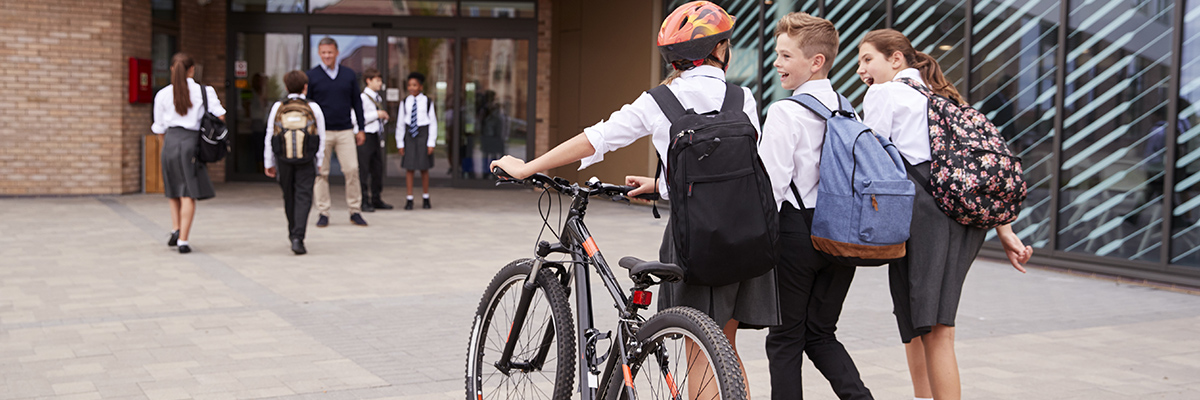Getting children cycling to school – how can we do it?
Only 2% of pupils in England cycle to school, even less than the 3% of adults who cycle to work. Similarly low rates can be found in other wealthy countries, like the US and Australia, although some European countries have much higher levels.
Hostile cycling environments, where riders are expected to mix with buses and other large vehicles, are off-putting enough for commuters, let alone for children (or more accurately, the adults deciding whether or not their children can cycle). Lack of provision for cycling may also help explain the comparatively low rates of cycling in England among women, who are more likely than men to be travelling with children.
Yet planning for school cycling barely exists. Most effort across the country goes into teaching children cycling skills, via the national Bikeability programme. While it’s important to ensure children can ride a bike, often little is done to ensure they have somewhere to ride. At school run times many neighbourhoods are traffic clogged, with drivers parked on double yellow lines and zig-zags, at times even driving on the pavement in the rush to drop off.
There hasn’t been much incentive for this to change. Transport planning has generally marginalised cycling, with planning tools and models focused on private motorised traffic. More broadly, commuters and to a lesser extent adults making other utility trips are prioritised over children’s mobility, independence, and well-being. These two factors have combined to mean that child cycling has not reached the mainstream transport planning agenda.
Cycling potential
Leadership and funding are crucial in changing the situation. But data and planning tools also matter. We saw an opportunity to use data to improve planning processes. Part of the problem is that we don’t know how many children might cycle to school. We don’t know which neighbourhoods could have high levels of child cycling, nor which routes within an area have the greatest potential.
Making that invisible potential visible is the challenge. And one that we’ve met through developing a new modelling tool, part of the Department for Transport-funded Propensity to Cycle Tool (PCT). The analysis is based on the National School Census within which data on travel to school was last collected in 2011 for all state primary and secondary schools in England.
The analysis shows that if children in England cycled to school at the same rates as Dutch children do (for trips of the same distance and hilliness), more than two in five children would do so. The model uses data from the Dutch travel survey, which shows for instance that while around a third of Dutch primary school children might cycle 2-3km to school, these rates drop to one in nine when distance rises to 4km. Realising the “Dutch” potential would mean a 22-fold increase from the current levels of one in 50 children cycling to school.
What might the benefits be of getting more children to ride to school? Many benefits can’t easily be quantified, such as the impacts of redressing long-term decline in children’s independent mobility. For children, available space has too often shrunk from whole neighbourhoods, to streets, to front or back yards – with the greatest impacts on children without access to private outdoor space.
But some impacts can be quantified. The PCT shows that if England achieved its school cycling potential, the benefits could be huge. The calculations suggest that achieving the scenario outlined above would increase physical activity from school travel among pupils by 57% and reduce transport-related carbon emissions by 81 kilotonnes per year.
These benefits vary by primary versus secondary school. Primary school children would see a 9% increase in physical activity from school travel (largely because many walk at present, with distances short). Secondary school children would see a 97% increase. Using World Health Organisation physical activity targets, the proportion of secondary school children getting at least half their recommended physical activity from active school travel would increase threefold, from 13.6% to 40.4%.
We’ve got a long way to go before cycling to school is normalised. If we get there, the benefits are great: improved health and well-being, cars off the road, greater child (and parental) mobility and independence. This will involve a shift in mindset, prioritising children’s health over adults’ car-driving convenience. The new PCT layer contributes to an emerging evidence base to help local policymakers plan for, and prioritise, child cycling.





